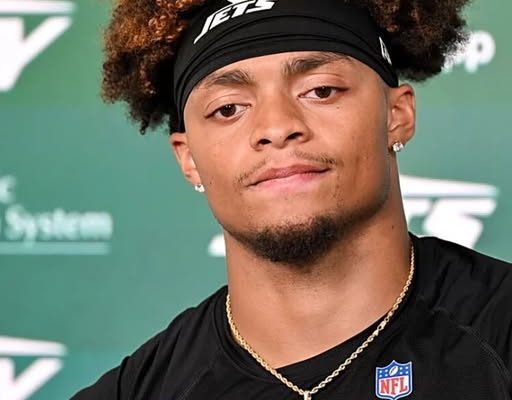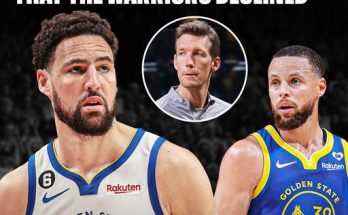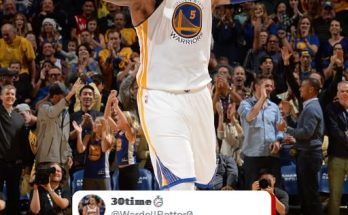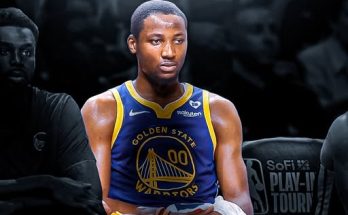The scene at MetLife Stadium went from raucous to hushed in a matter of seconds. What began as an energetic preseason matchup quickly turned into a moment of fear, reflection, and uncertainty. The New York Jets, entering the 2025 season with heightened expectations and a freshly restructured offensive identity, suffered a potential catastrophe when starting quarterback Justin Fields went down with what appeared to be a serious lower leg injury. The injury, sustained during the second quarter of the exhibition matchup against the Detroit Lions, stunned players, fans, and coaches alike, prompting a flurry of reactions across the league and immediate questions about the future of the franchise’s 2025 campaign.
Fields, acquired in a blockbuster offseason trade from the Chicago Bears, had emerged as the Jets’ focal point heading into the new season. His arrival was met with a wave of optimism from fans and analysts alike. He was poised to finally provide the stability under center that the Jets have been desperate for since the days of Chad Pennington. The team had even reshaped its offensive playbook under new coordinator Marcus Brady to emphasize Fields’ strengths—his mobility, improvisational skills, and improved decision-making from the pocket. That plan now hangs in the balance after Fields was carted off the field, unable to walk under his own power, clutching his right lower leg in visible pain.
The play that led to the injury was routine at first glance. On a second-and-seven from the Jets’ 34-yard line, Fields took a shotgun snap and immediately faced pressure from the left edge. He evaded the initial rush with a trademark spin move, stepped up in the pocket, and attempted to scramble for a first down. But just as he planted his right foot to accelerate, he crumpled to the turf without being touched. Trainers rushed to his aid as the quarterback lay motionless for several minutes. The stadium fell silent, the buzz evaporating into a collective gasp and stunned silence. Teammates gathered in a circle, many kneeling in prayer. Fields, grimacing through the pain, was eventually helped onto a cart and taken into the locker room.
The Jets’ medical staff has yet to release an official diagnosis, but preliminary reports suggest a possible dislocation or fracture to the lower leg. X-rays were reportedly inconclusive on the sideline, necessitating further imaging and evaluation at a nearby hospital. While the team has categorized his status as “day-to-day” for now, the optics of the injury and Fields’ reaction have fueled speculation that the issue may be more severe. For a franchise that has built its 2025 hopes around Fields’ dynamic skillset, the injury could not come at a worse time.
Jets head coach Robert Saleh, visibly shaken during the post-game press conference, attempted to provide reassurance while acknowledging the gravity of the situation. “Obviously, we’re all praying for Justin right now,” Saleh said. “He’s a warrior, he’s been through a lot in this league already, and he’s got the heart of a lion. We’re not going to jump to conclusions. We’ll wait for the doctors to run their tests and give us clarity. Until then, we support him 100% and prepare for whatever comes next.”
Saleh’s tone was measured, but the concern in his eyes was undeniable. The loss of Fields—be it temporary or extended—sends shockwaves through a team that has invested deeply in his development. The front office had spent the past six months building a roster designed to maximize Fields’ abilities. They brought in veteran linemen to bolster protection, signed speedy receivers who could stretch the field, and invested in a revamped quarterback coach staff that included former pros and analytics experts. All of this effort was aimed at unlocking the full potential of a quarterback who had shown flashes of brilliance but struggled with consistency in Chicago.
For Fields, the timing is especially cruel. The 26-year-old entered 2025 with something to prove—not just to critics, but to himself. After an up-and-down tenure with the Bears, where he dazzled with highlight-reel runs but endured criticism for poor decision-making and spotty accuracy, he hoped New York would be the clean slate he needed. By all accounts, he had impressed in training camp. Reports from Florham Park described Fields as more confident, vocal, and mature. Teammates praised his leadership and work ethic. Offensive lineman Mekhi Becton went as far as to say, “This is his team now. You can feel it.”
Now, the Jets find themselves in a precarious position. Their backup quarterback, veteran Tyrod Taylor, is capable but not the long-term answer. Taylor, 36, was brought in as a steady hand and mentor—an insurance policy, not a Plan A. If Fields misses significant time, Taylor would likely step in, but the team’s offensive philosophy would have to be adjusted. The Jets could also look to third-stringer Jake Haener, a second-year player out of Fresno State who has yet to take a regular-season NFL snap. Alternatively, they could explore free-agent options, but pickings are slim this late in the preseason. Colin Kaepernick’s name will likely resurface in media chatter, as it often does in times of QB scarcity, but the more realistic candidates include Nick Foles, Joe Flacco, or perhaps a trade for a younger backup like Sam Darnold, ironically.
The ripple effects of Fields’ injury extend far beyond the field. The Jets are scheduled to appear in five prime-time games this season, thanks in large part to Fields’ star power and the anticipation of a revived offense. A prolonged absence could prompt the NFL to reshuffle schedules or diminish national interest in key matchups. It could also have financial consequences for the Jets, who recently launched a marketing campaign centered around Fields, selling jerseys, commercials, and digital media content highlighting his new chapter in New York.
Fans took to social media immediately after the incident, expressing both support and frustration. “This can’t be happening,” one user wrote. “We finally get a quarterback and this happens? Unreal.” Another fan tweeted, “Prayers up for Justin Fields. The guy worked his tail off to get here. Just heartbreaking.” The sentiments ranged from sympathetic to apocalyptic, with the usual mix of hot takes, conspiracy theories, and long-suffering humor that has become the hallmark of Jets fandom.
Across the league, several players voiced support. Bears wideout Darnell Mooney, Fields’ former teammate, posted a message of encouragement on Instagram, writing, “My brother gonna bounce back stronger. God got you.” Ravens quarterback Lamar Jackson tweeted, “Hate to see that. Praying for 1.” The fraternity of NFL players, aware of how fragile careers can be, rallied around Fields in a show of unity and respect.
Fields’ journey to this point has been anything but smooth. A former Ohio State star, he entered the NFL with high expectations after being selected 11th overall in the 2021 draft. While he showed promise, the Bears’ revolving door of coaches and coordinators hindered his growth. Despite that, Fields set multiple rushing records and began to show real progress as a passer by 2023. Still, the Bears opted to move in a new direction, selecting quarterback Caleb Williams in the 2025 NFL Draft. That decision paved the way for Fields to find a new home in New York—a team hungry for a hero and a city starving for success.
Even as the medical outlook remains unclear, the mental toll of the injury could be significant. Fields has already faced more adversity in his first four NFL seasons than many quarterbacks face in a decade. Each setback—be it a coaching change, injury, or media scrutiny—has been met with resilience. But how many times can an athlete bounce back before the wear and tear, both physical and emotional, begins to mount? That’s a question the Jets must consider as they chart a course forward.
For now, the team will huddle, regroup, and prepare for the worst while hoping for the best. Fields’ locker remains untouched, his jersey still hanging with the same quiet confidence he carried on the field. The mood in the Jets facility is somber yet determined. This is the NFL, after all—a league where injuries are an unfortunate inevitability, and where depth, preparation, and leadership often determine who survives the storm.
As the football world holds its breath awaiting further news, one truth remains undeniable: Justin Fields’ presence in the NFL is electrifying, and his absence—if extended—will be profoundly felt. The Jets may be built as a team, but their identity was shaping up around one man. Whether that identity now shifts, stalls, or collapses entirely depends on what the MRI reveals, what the medical staff advises, and what Justin Fields—resilient, tested, and battle-hardened—decides to do next.
The road ahead is murky, but this much is clear: the story of the 2025 Jets has taken a dramatic, gut-wrenching turn. And like so many times before, the franchise finds itself not just facing an opponent on the field—but fate itself. Whether this becomes another chapter in the Jets’ long history of heartbreak or the turning point in Fields’ legacy is a question that only time, and healing, can answer.



